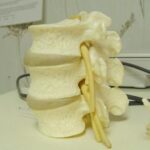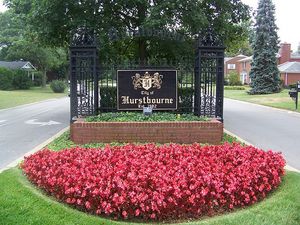Sometimes it can be hard living with any type of disease, some more so than others. I am writing this content in hopes that this short article will reach out to those who are much like myself, so that one may never feel alone! I too have gone through the repeated doctor visits and have had surgery on my spine and knee due to this disorder. Some people do go through many more surgeries during their lifetime.
I have a dominantly inherited genetic disorder characterized by multiple cartilaginous tumors, or exostoses. The name of this disorder is Hereditary Multiple Exostoses (HME). It also goes by the following names: Multiple Hereditary Exostoses or Multiple Osteochondromatosis.
First I must explain what Exostoses are for those that may be unsure. They are bone growths that are abnormal or different from the underlying bone structure. These growths are benign tumors that are usually rounded or sharp. Exostoses usually stop growing when a person is fully grown. They are primarily located on long bones; such as, the legs, arms, fingers, and toes. Exostoses can pretty much grow anywhere and are common on the pelvis and shoulder blades. They are very uncommon on the face or skull. Exostoses grow near bone growth centers (growth plates) and they may make the whole growth center grow poorly or only part of it.
Exostoses can be painful and very sensitive to being bumped. Sometimes exostoses grow near nerves or tendons and press on them. In this case, they often need to be removed to avoid damage of the structure which they press on and the structure above them. Once removed, exostoses can reoccur about 25-50 percent of the time. The benign exostoses of HME can become a malignant tumor (cancer), called Chondrosarcoma. This rarely occurs, but can form after a person’s body growth period has ended. Any extra growth or pain means one should make another trip to the doctor!
Exostoses can cause bowing of one’s bones and it mostly affects the arms or legs. Sometimes removing the exostoses at an early age can help aid in straightening the bones. Severe bowing results in immediate removal of the exostoses.
Depending on different parts of the world, HME occurs to 1 out of 1,000/50,000/or 100,000 people. People with HME are generally short in nature and have different degrees of orthopedic deformity.
There are various problems caused by HME, which includes the following:
– Compression of peripheral nerves or blood vessels
– Irritation of tendons and muscles resulting in pain and loss of motion
– Skeletal deformity, short stature, and limb length discrepancy
– Chronic pain and fatigue
– Mobility issues
– Early onset of arthritis
– Increased risk of developing malignant tumor transformation
– Legs can become knock kneed
– Some will get stiffness, especially in the elbows and hips; because of the blocking of bodily motion
Surgery may be required to alleviate secondary complications; such as, joint pain and restricted movement. Surgery, physical therapy, and pain management are currently the only options available for relief from HME. There are support groups in existence for needed guidance or just for someone to talk to.


